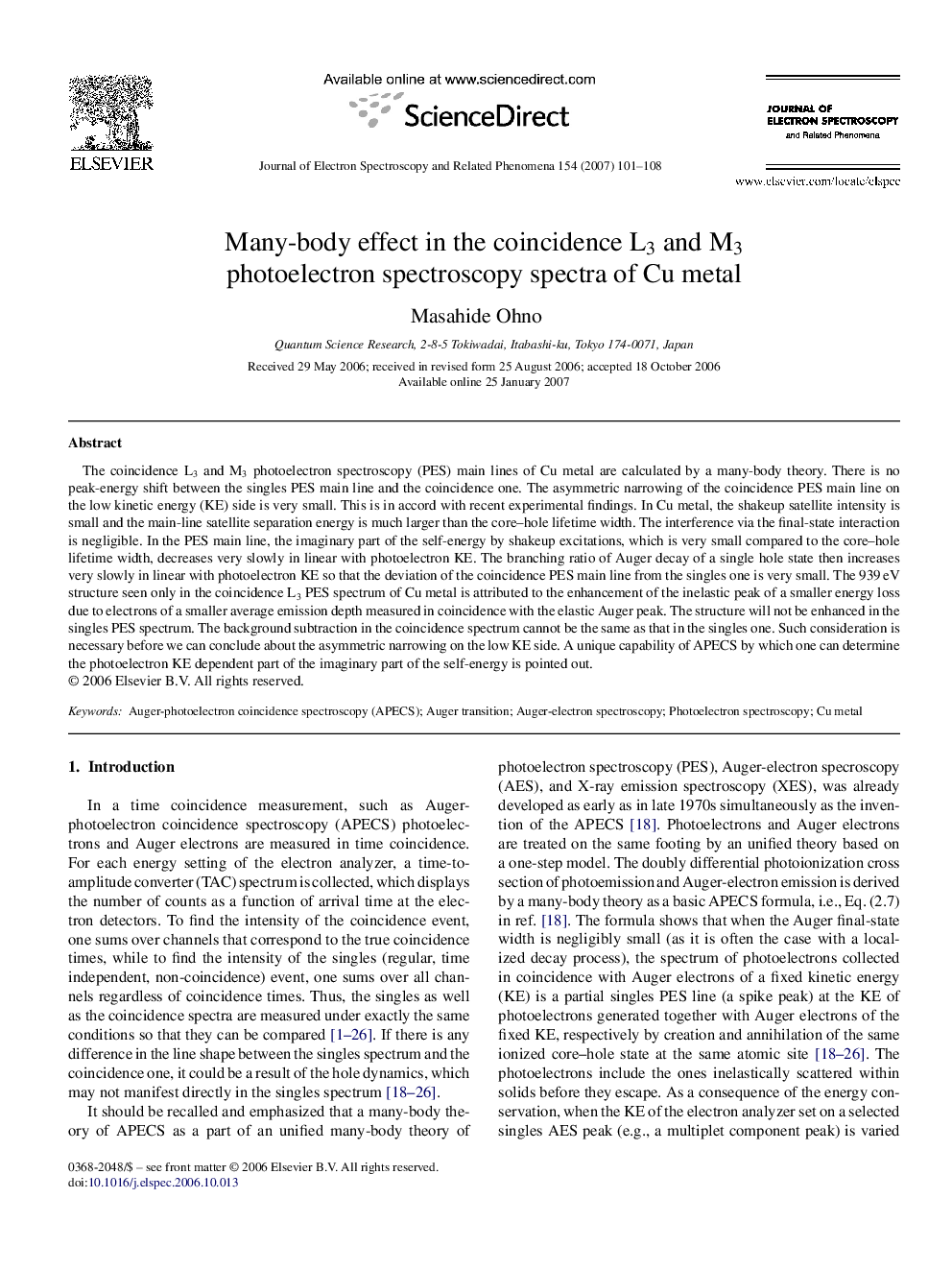| کد مقاله | کد نشریه | سال انتشار | مقاله انگلیسی | نسخه تمام متن |
|---|---|---|---|---|
| 5397169 | 1392322 | 2007 | 8 صفحه PDF | دانلود رایگان |
عنوان انگلیسی مقاله ISI
Many-body effect in the coincidence L3 and M3 photoelectron spectroscopy spectra of Cu metal
دانلود مقاله + سفارش ترجمه
دانلود مقاله ISI انگلیسی
رایگان برای ایرانیان
کلمات کلیدی
موضوعات مرتبط
مهندسی و علوم پایه
شیمی
شیمی تئوریک و عملی
پیش نمایش صفحه اول مقاله

چکیده انگلیسی
The coincidence L3 and M3 photoelectron spectroscopy (PES) main lines of Cu metal are calculated by a many-body theory. There is no peak-energy shift between the singles PES main line and the coincidence one. The asymmetric narrowing of the coincidence PES main line on the low kinetic energy (KE) side is very small. This is in accord with recent experimental findings. In Cu metal, the shakeup satellite intensity is small and the main-line satellite separation energy is much larger than the core-hole lifetime width. The interference via the final-state interaction is negligible. In the PES main line, the imaginary part of the self-energy by shakeup excitations, which is very small compared to the core-hole lifetime width, decreases very slowly in linear with photoelectron KE. The branching ratio of Auger decay of a single hole state then increases very slowly in linear with photoelectron KE so that the deviation of the coincidence PES main line from the singles one is very small. The 939Â eV structure seen only in the coincidence L3 PES spectrum of Cu metal is attributed to the enhancement of the inelastic peak of a smaller energy loss due to electrons of a smaller average emission depth measured in coincidence with the elastic Auger peak. The structure will not be enhanced in the singles PES spectrum. The background subtraction in the coincidence spectrum cannot be the same as that in the singles one. Such consideration is necessary before we can conclude about the asymmetric narrowing on the low KE side. A unique capability of APECS by which one can determine the photoelectron KE dependent part of the imaginary part of the self-energy is pointed out.
ناشر
Database: Elsevier - ScienceDirect (ساینس دایرکت)
Journal: Journal of Electron Spectroscopy and Related Phenomena - Volume 154, Issue 3, February 2007, Pages 101-108
Journal: Journal of Electron Spectroscopy and Related Phenomena - Volume 154, Issue 3, February 2007, Pages 101-108
نویسندگان
Masahide Ohno,